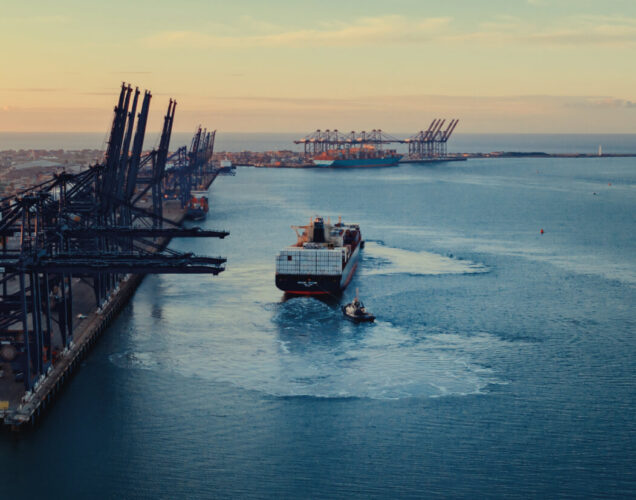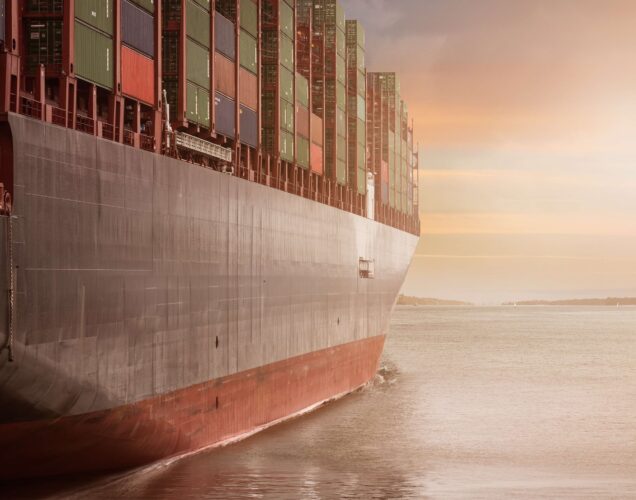What You Need to Know
On 1st April 2017, the existing container alliances between the major ocean carriers are restructuring, changing from the existing four alliances to three larger alliances.
In this blog, we’ll take a look at how the container alliances work, what’s changing and what effect this might have on cargo owners, logistics operators and ports – both in the short term and further into the future.
So, why do the alliances exist?
Carriers combining into collectives makes a great deal of sense; it allows them to pool vessels and achieve considerable efficiencies in moving cargo around the world.
Such alliances allow cargo owners and logistics firms more flexibility and greater geographic coverage than would be available using a single carrier.
However, due to factors such as financial fortunes, changes in strategy, and wider market events and fluctuations (for example, the recent collapse of South Korea’s Hanjin Shipping, which before its failure was one of the world’s top ten container carriers) these container alliances will every so often shift and change.
The combined market dominance of container alliances can’t be understated. The new alliances (set to begin operations inbound from April, with export services kicking off in May) will together represent over 77% of total global container capacity, and 96% of all East-West trade capacity. The three alliances are:
- 2M Alliance: the existing alliance of Maersk Line and Mediterranean Shipping Company (MSC), which will now incorporate Hyundai Merchant Marine (HMM) – although the latter will be on a Vessel Sharing Agreement basis, rather than full membership. Subject to regulatory approval of Maersk’s acquisition of Hamburg Sud, the 2M group will hold 33.4% of the total global market share in container capacity.
- Ocean Alliance: combining French carrier CMA CGM, China’s COSCO, Taiwanese Evergreen Marine and Hong Kong-based Orient Overseas Container Line (OOCL). This alliance of the world’s third, fourth, fifth and ninth biggest container lines will own 41.43% of the Transpacific trade lane’s capacity, and 34.86% in Asia-Europe trade.
- THE Alliance: initially composed of German carrier Hapag-Lloyd, Taiwanese Yang Ming, and Japanese firms “K” Line, Mitsui O.S.K. Lines (MOL) and NYK Line; the latter three companies are due to merge as a joint venture under a new name in April 2018. THE Alliance will together represent around 16% of global container capacity.
How much of an impact are the new alliances likely to have?
In the short term, this is more of a reshuffling of the cards than a seismic shift. Shipping industry alliances are renegotiated every two or three years and it’s unlikely to have an immediate impact on the big picture of global logistics. It does, however, have the potential to have a short-term impact on cargo owners and logistics businesses.
The restructured alliances by their very nature mean route and schedule changes, which in turn can have a knock-on effect on cargo transit times. It’s not unheard of to see containers being delayed by as much as a week as new alliances come into effect.
Cargo owners and logistics firms can best address any issues this might cause with proactive planning and by talking to each other about delivery requirements – particularly in cases where the cargo delivery date is urgent or time-sensitive.
Change isn’t always a bad thing
In the medium to long term, this consolidation from four alliances to three larger groups could have a more noticeable impact on ports and logistics businesses.
Changing shipping routes and frequency will almost inevitably see some ports gain more traffic, while others experience a reduction. And, as container ships used by the alliances get larger and larger (March saw the launch of the MOL Triumph, with a capacity of 20,150 twenty-foot equivalent units) ports are under ever-greater pressure to invest in larger cranes and greater container capacity.
Although the US Federal Maritime Commission said last November that there was no evidence of collusion or price-fixing among the alliances, it seems reasonable to assume that a reduction in the number of alliances – and the ongoing series of mergers in the container shipping industry – might affect prices as customers will have less choice.
That said, current cargo shipping rates are already highly variable based on demand and availability, and it could well be that the efficiencies of alliances and bigger ships combined could lead directly to savings that can be passed on to cargo owners.
That said, current cargo shipping rates are already highly variable based on demand and availability, which emphasises the need for both importers and exporters to have a close partnership with their logistics provider. One-stop service providers, like Hemisphere, have market-wide knowledge and access to keep supply chains flowing as efficiently and effectively as possible.
If you’d like more information about how the new container alliances could affect your regular shipping routes, we’d encourage you to speak to one of our expert logistics consultants today. We’re only too happy to help.






